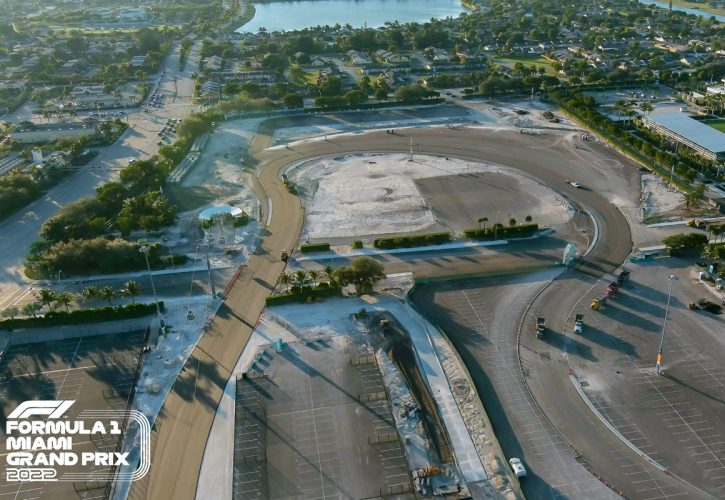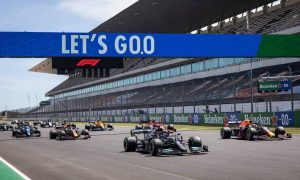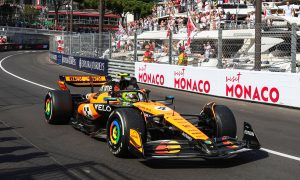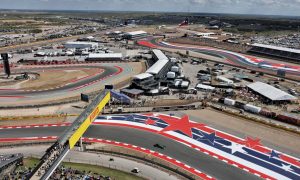
The company behind the layout of the new Miami International Autodrome circuit says it has put exiting racing first and foremost when it came to its approach for F1's newest venue, set to make its bow next month.
British firm Apex Circuit Design was responsible for planning the layout of the anticlockwise 3.36-mile track which has been constructed around the Hard Rock Stadium in Miami Gardens.
The 19-turn circuit should present drivers with overtaking opportunities through at least three sections, including the turn 17 hairpin which comes at the end of a 1.2km straight which should see cars achieve speeds of up to 199mph.
In total, the track is expected to deliver average speeds of 135mph with an expected lap time of 95 seconds.
“Racing comes first and foremost in our company’s design philosophy,” insisted senior design engineer Charles Metcalfe in comments reported by Motorsport.com this week, as well as number of videos released by Apex.
“As a company our ethos is to challenge all of the F1 teams - their cars, their race engineers, and of course their drivers.
"We focus on corner sequences, a dynamic range of corners from fast-speed to low-speed," he explained.
"To achieve this we do a lot of simulation work and intentionally ensure there are different corner sequences in a lap which flatter different vehicle set ups.
"It’s notionally a street track with some really challenging corners, so you’d expect high downforce. But we have some really long straights and some high-speed corner sequences too that would favour a lower drag setup.
“There is a very high speed and high lateral-G section from turns 4 to 8, where cars will likely struggle to pass and where vehicle performance on the exit of Turn 8 is critical to lap time.
"[That's] followed by two fast power-limited corners at turn 9 and 10 where it is credible to imagine side-by side racing.
“In Sector 3, where we have the low-speed and grade-changing Turns 14-16 beneath the Turnpike flyovers," Metcalfe continued. "It’s intentionally a very challenging technical sequence
“We have engineered ‘mistake generators’ in the form of grade – and grip – change on corner apexes that could result in changes of position, where a team might choose a set up that optimises low-speed traction over high-speed grip.
“We’re seeking to challenge the race engineers and their vehicle setups as much as possible," he said. “There will definitely be a compromise here between downforce levels.
"It’ll be interesting to see the top speed differentials between the teams. We want to see a big mix to make the racing as exciting as possible.”
Metcalfe said that a lot of thought had also gone into the spectator experience at the circuit.
“Right from the initial masterplanning phase, we laid out some concepts of what we want from a racing perspective.
"We’ll consider how that can be integrated as an event for the spectators, how it can work well for the teams and F1,” he added.
“It’s a big balance, so that leads to an iterative process where you go back and forth with all the features of the circuit and venue, just to nail that optimal approach and solution."
Gallery: The beautiful wives and girlfriends of F1 drivers
Keep up to date with all the F1 news via Facebook and Twitter







